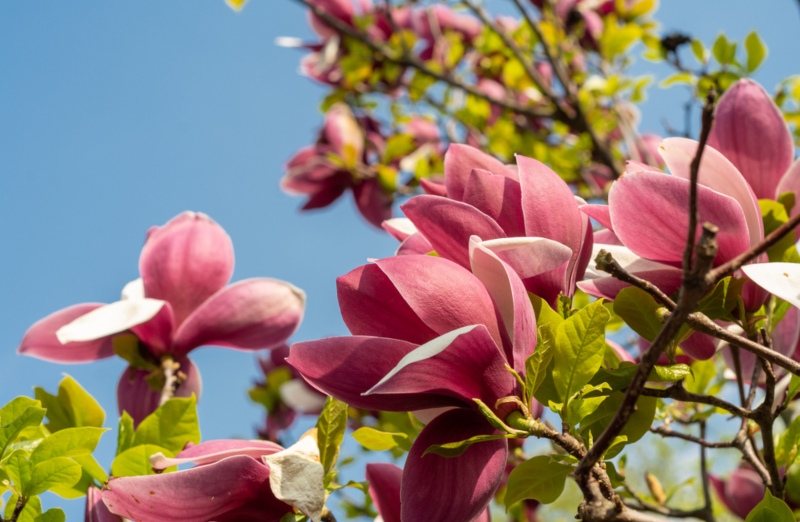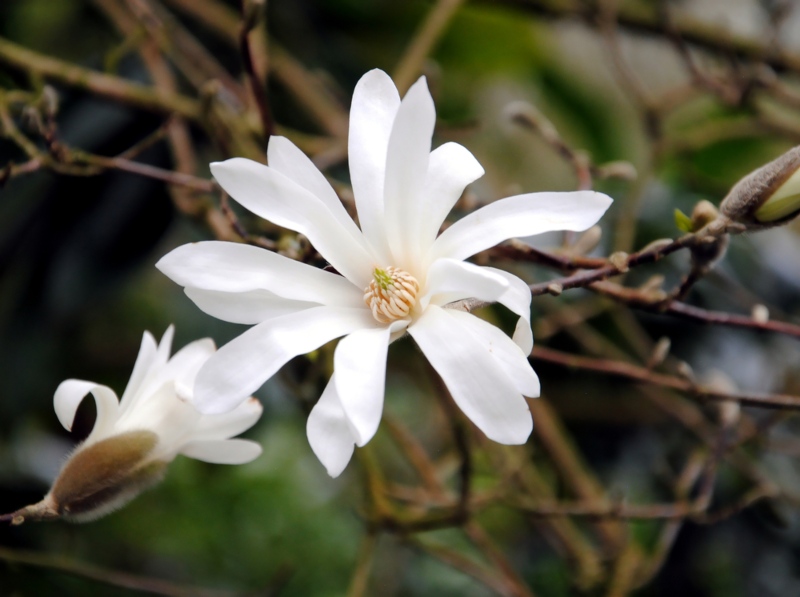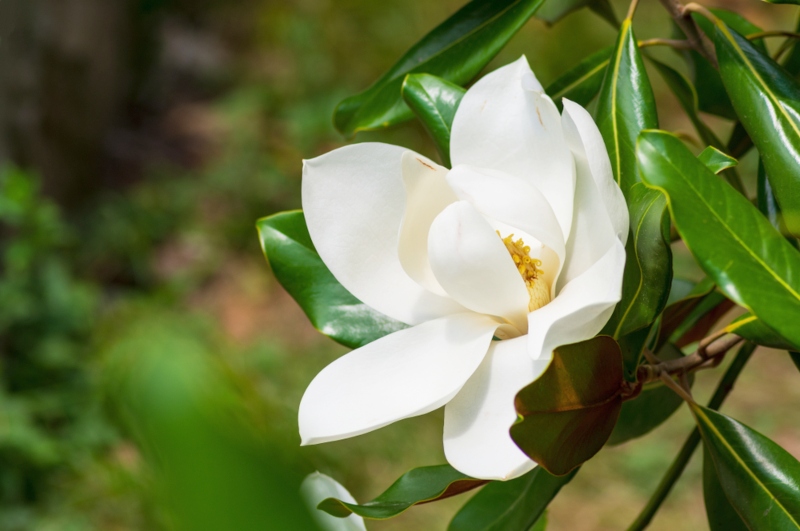Known for thriving in warm climates and for their stunning, wax-like flowers that produce a nearly euphoric aroma. Magnolias are considered an iconic staple of gracious southern landscaping.
However, the Magnolia genus includes 210 flowering plants, including a wide variety of trees and shrubs, and some perform quite well in locations with colder weather — the key is to choose varieties suited for your local climate. Those in the Deep South, for instance, have the ideal environment for the classic Southern Magnolia, while other varieties are better choices for locations farther north.
Here’s what you need to know about successfully cultivating a Magnolia tree in your home landscape:
How to Plant a Magnolia
The best time to plant a magnolia is during late winter or early spring while the tree is still dormant. Because magnolia roots grow horizontally, the planting hole should be slightly wider than it is deep, so make sure it’s at least one-and-a-half times larger than the root ball and slightly less deep. After filling the hole with soil mixed with rich organic compost, tamp the soil down gently to minimize disruption to the roots and water well. Add a layer of organic mulch but don’t mound it around the young tree’s trunk.
Although it can be tempting to plant a magnolia tree near a window so that the spring and early summer breeze will carry the heavenly aroma of the flowers indoors, this should be avoided because the horizontal root systems have the potential to wreak havoc on home foundations. Fortunately, the scent of magnolia flowers is strong enough so that it’s noticeable from a distance.

Light and Watering Requirements
Magnolia trees do best when they’re planted in full sun, which means they need to have about six hours of sunlight per day in order to put on their best performance. Their shallow root system means that they may need more summer water than their counterparts with roots that reach deep into the soil to access the underground water closer to the water table. Water your magnolia tree once per week during the first two growing seasons after it’s been planted and twice per month in subsequent years. In times of drought, you may need to water more frequently, although mature, well-established magnolias are fairly drought resistant. Magnolia trees may require more watering in sandy soils.
Soil and Fertilizer Needs
Most Magnolia species thrive in slightly acidic soils, but they can do fairly well when conditions are neutral or even somewhat alkaline, but you should add organic mulch to increase the amount of acid in the soil in this case. Magnolia likes nitrogen, so use a 12-4-8 or a 20-5-10 fertilizer per package directions. Keep in mind that proper fertilization keeps trees healthy so they can more easily resist insect pests as well as bacterial and fungal pathogens.
Temperature and Humidity Needs
Although Magnolias can thrive in areas with colder winter temperatures, some varieties may be damaged or even killed in areas where temperatures routinely drop below 20 degrees Fahrenheit. Those who live in these areas should purchase cold-hardy trees such as Star Magnolia, which grows best in USDA zones 4-8. Southern Magnolias, on the other hand, shouldn’t be planted in anything under zone 7. Most Magnolia species do fine in humid conditions, and some even prefer it that way.

How to Care for Your Magnolia
Because of their ornate appearance, Magnolias are often mistaken for fussy trees that are difficult to grow, probably because their gorgeous blooms resemble carefully tended hothouse flowers, but these trees are surprisingly low-maintenance. Common pests such as aphids, scales, thrips, and various species of caterpillar, but these pests can usually be controlled by adding beneficial insects such as ladybugs to the picture and by including hardscaping features such as birdbaths and birdhouses that attract insect-eating birds to your yard.
Magnolias also don’t require any special pruning — simply remove dead or broken branches on an as-needed basis.
Are Magnolias Toxic?
Magnolias have no known toxicity to humans, domestic pets, or wildlife. However, eating Magnolia berries shouldn’t be encouraged, and digestive and other issues may arise if any parts of the tree are ingested after topical fertilizer, pesticide, or herbicide applications.




